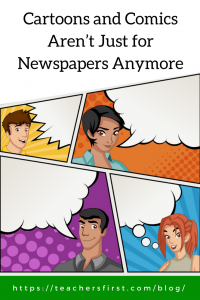 Did you know the first cartoon appeared in a U.S. newspaper way back in 1754? Benjamin Franklin’s Pennsylvania Gazette featured the political cartoon “Join or Die” on May 9, 1754. The picture showed the American colonies as a snake divided into eight pieces and presented the political point of view that the colonies should unite. Franklin used the comic to voice his political feelings to the public as a method to convince colonists of the need for colonial unity. Colonists faced many decisions about westward expansion and threats from the French and their Indian allies at the time.
Did you know the first cartoon appeared in a U.S. newspaper way back in 1754? Benjamin Franklin’s Pennsylvania Gazette featured the political cartoon “Join or Die” on May 9, 1754. The picture showed the American colonies as a snake divided into eight pieces and presented the political point of view that the colonies should unite. Franklin used the comic to voice his political feelings to the public as a method to convince colonists of the need for colonial unity. Colonists faced many decisions about westward expansion and threats from the French and their Indian allies at the time.
Since that time, the use of comics and cartoons has spread beyond the political pages of our newspapers. Although comics still provide political commentary and opinions, we now see comics in a variety of both still and animated content. Think about some of your favorite recent movies; it is very likely some of them contain very sophisticated animations. According to Webster’s Dictionary, these sophisticated films fit into the definition of a cartoon.
- In today’s classrooms the use of comics and cartoons is becoming increasingly popular for several reasons:
- Comics appeal to our visual senses and teachers include them as a different modality for learning beyond written text and oral presentations.
- Today’s students see cartoons in various media throughout the day. They see cartoons in their video games, commercials, movies, and in written materials.
- Online resources make it easy for teachers and students to create comics.
- Comics and cartoons offer options for use in any subject area.
- Cartoons appeal to students of any age and any ability.
Recently, TeachersFirst devoted an entire OK2Ask webinar to the implementation of cartoons in the classroom; the archive of the session is available here. This professional development session entitled Engage & Inspire: Comics in the Classroom shared ideas for using comics to teach visual literacy strategies, explored comic creation tools, and discussed assessment strategies when using comics in the classroom. The resource site for this session contains many ideas on how to use comics in the classroom and free websites for creating comics. It is an excellent resource for learning about and implementing cartoons and comics.
In addition to the ideas and resources presented in our OK2Ask session, TeachersFirst also features a Special Topics collection devoted to Comics and Cartoons Resources. Currently, this list includes 22 of the best free resources for creating and sharing cartoons as a learning tool. If you aren’t familiar with TeachersFirst reviews, each review contains a short description of the tool and a dedicated section with ideas for using it in the classroom. Each of these resources also fit into our Edge category that provides additional information. Use information within the review to look for suggested grade levels for using the resource and open the review fully to find the small ruler at the bottom of the review. This ruler provides viewers an indication of the difficulty level of the resource; even the most fearful technology users will find tools to fit their comfort level.
To find digital tools for creating animated content, check out this list of over 40 tools for creating animation. These tools create animated projects in a variety of ways. Several tools allow you to create animated video explanations, others use coding to guide you toward creating animated projects like dancing robots, and others include resources for creating simple animations.
Using comics and cartoons in your classroom is an effective way to motivate students and meet their different learning styles. Encourage students to create cartoons and animated videos to share explanations of science experiments, break down math problems, or summarize novels. Comics offer unlimited opportunities to encourage creativity and extend learning through self-expression.
Have you tried using comics and cartoons in your classroom? We would love to hear about your experiences and favorite tips in the comments below.

